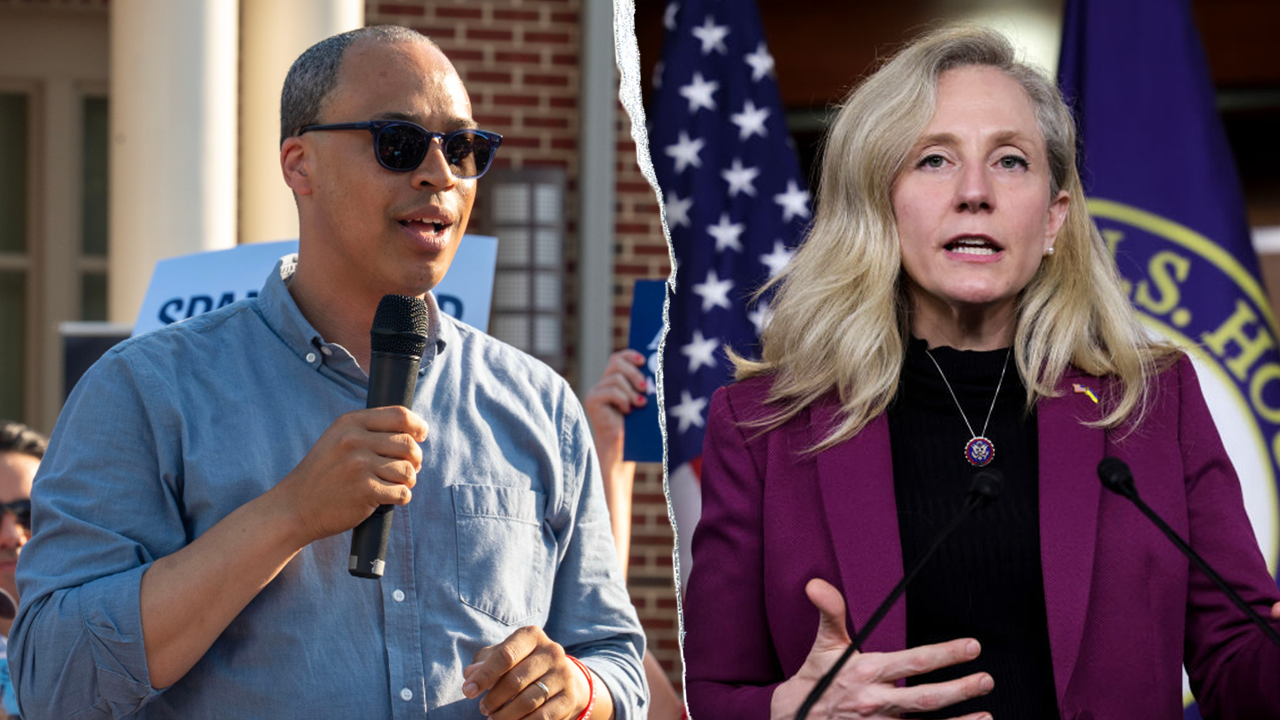INTERNACIONAL
Las potencias nucleares modernizan su arsenal y le abren la puerta a una nueva carrera armamentista atómica

En medio de las guerras en curso entre Israel e Irán, Gaza y Ucrania, los principales países dotados de armas nucleares, en especial Estados Unidos y Rusia, modernizaron sus arsenales el año pasado y abrieron la vía a una nueva carrera armamentística atómica.
La advertencia fue hecha por el Instituto Internacional de Investigación para la Paz de Estocolmo (SIPRI).
Leé también: Conflicto en Medio Oriente: Trump rechazó el plan israelí para matar al líder supremo de Irán
Las potencias nucleares, lideradas por Washington y Moscú, que representan alrededor del 90% de las reservas mundiales, emprendieron “la modernización de las armas existentes y agregan nuevas versiones” a su arsenal atómico, reveló el organismo en un comunicado.
Del inventario total estimado en enero pasado de 12.241 ojivas, unas 9614 se encontraban en arsenales militares para uso potencial; 3912 de ellas están desplegadas con misiles y aviones; y unas 2100, en estado de alerta máxima en misiles balísticos.
“El número de ojivas nucleares comienza a aumentar”
Desde el fin de la guerra fría, las antiguas ojivas por lo regular fueron desmanteladas más rápido que el despliegue de las nuevas. Esto llevó a una disminución de su número total en el mundo.
Pero esta tendencia puede invertirse en los próximos años. El hongo nuclear que siguió tras la bomba de Hiroshima (Foto de archivo: AFP)
“Lo que constatamos hoy de antemano es que el número de ojivas nucleares operativas comienza a aumentar”, declaró Dan Smith, director del SIPRI.
China suma 100 nuevas ojivas cada año
Ese es el caso de China que, según los cálculos del instituto, posee unas 600 ojivas nucleares, tras agregar 100 nuevas cada año en 2023 y 2024.
“China aumenta con regularidad su fuerza nuclear”, dijo Smith. Es “posible que alcance 1000 ojivas de aquí a siete u ocho años”, agregó.
Leé también: Israel quiere destruir la capacidad nuclear iraní y presiona para lograr un cambio de régimen en Medio Oriente
A su vez, Rusia y Estados Unidos disponen de “vastos programas de modernización y reemplazo de sus ojivas nucleares”, indicó el informe.
El SIPRI recordó que el Tratado de Reducción de Armas Estratégicas (START III) expira en febrero de 2026. Además, alertó que, si no se alcanza un nuevo acuerdo bilateral, es probable un aumento del número de ojivas desplegadas.
Qué sucede en Europa
Reino Unido no habría aumentado su número de ojivas en 2024.
Sin embargo, prosiguió el reporte, dada la decisión tomada por Londres en 2021 de aumentar el límite del número de ojivas de 225 a 260, es probable que ese número aumente en el futuro.
Aunque el arsenal de Francia permanece estable en unas 290 ojivas, “su programa de modernización nuclear avanzó en 2024”.
Asia: el caso de India y Pakistán
En tanto, India y Pakistán, dos enemigos históricos, “siguieron desarrollando nuevos tipos de vectores de armas nucleares en 2024”.
A inicios de 2025, India disponía de una “reserva creciente” de unas 180 armas nucleares, mientras el arsenal pakistaní sigue estable en unas 170 ojivas.
El programa de armas nucleares de Corea del Norte está en “el corazón de su estrategia de seguridad nacional”, según el informe, que calcula en unas 50 ojivas su arsenal, que puede llegar a un total “de 90 ojivas” en un futuro.
Israel, un país nuclear no reconocido
Israel, que no reconoce la posesión de armas nucleares y enfrenta varios frentes de guerra con Irán y en Gaza en primer plano, también estaría modernizando su arsenal.
Según el SIPRI, su poderío atómico se estimaba en unas 90 ojivas a comienzos del año. La nube con forma de hongo tras el impacto de la bomba atómica lanzada en Hiroshima el 6 de agosto de 1945 (Fuente: EFE).
La carrera armamentística nuclear que se avecina no sólo concierne “el número de ojivas”, advirtió Smith.
“Será altamente tecnológica” y tendrá lugar tanto “en el espacio como en el ciberespacio”, ya que los programas para controlar y guiar las armas nucleares serán también un sector competitivo, añade el experto.
Leé también: Tras los ataques de Irán a Israel, la DAIA reforzará las medidas de seguridad en las instituciones judías
El rápido desarrollo de la inteligencia artificial jugará probablemente un papel, primero como complemento de los humanos.
“La siguiente etapa sería pasar a la automatización total. Ese es un paso que nunca se debe dar”, afirmó Smith.
(Con información de AFP y EFE)
nuclear
INTERNACIONAL
From Africa to Iran: Mamdani’s mayoral win draws praise from unexpected quarters, sharp criticism

NEWYou can now listen to Fox News articles!
Zohran Mamdani’s historic win as New York City’s first Muslim mayor has sparked global reactions — from pride in Uganda to anxiety in Israel, to jubilation among leftists in Europe, and even praise from an Iranian lawmaker and a Hamas social media channel.
The 34-year-old Democratic Socialist, born in Uganda to Indian parents, has become a symbol of a new, intersectional left — and a flashpoint for debates over socialism, Israel and U.S. foreign policy.
Uganda
In Uganda’s capital of Kampala, Ugandans told Fox News Digital that Zohran Mamdani’s victory as New York City’s first Muslim mayor «felt like a homegrown win.» Although his family left Uganda when he was an infant, many in the East African nation say they view him as one of their own — proof that Ugandans and immigrants alike can rise to global leadership.
Siraje Kifamba Nsamba, a social worker at Uganda’s Islamic Center for Education and Research, said Mamdani «has made history for Uganda.»
MAMDANI TAKES COMMANDING 22-POINT LEAD OVER CUOMO IN NEW POLL
Zohran Mamdani delivers a victory speech at a mayoral election night watch party, on Tuesday, Nov. 4, 2025, in New York City. (Yuki Iwamura/AP)
«He did not hide his identity as Ugandan by birth,» Nsamba said. «Against all odds, he broke every record. He showed the world that you can come from here and lead anywhere.»
Nsamba added that Mamdani’s campaign — built on promises of rent freezes, free public transit, and affordable living — resonated not only with struggling New Yorkers but also with Ugandans who saw in him an example of immigrant success.
«It motivates so many young people here,» he said. «He’s an example that you can come from home and become a leader in any field.»
Another Ugandan citizen said: «I want to cry out load because we lost such a great leader to New York. We’ve missed out because we believe in a system where there is a classless society where rich work for the poor… New York, I want to tell you there are more Mamdani here in Kampala, more for you».
A Kampala rapper and local politician echoed that pride, calling Mamdani’s victory «a triumph for artists, dreamers, and immigrants.» Tom Mayanja, a musician known by his stage name The Myth UG, recalled interviewing Mamdani years ago and remembering him as «focused, witty, and deliberate.»
MAMDANI RIPPED BY RIVALS FOR UNPOPULAR STANCE DURING FIERY NYC DEBATE: ‘YOU WON’T SUPPORT ISRAEL’

Supporters of New York City Mayoral candidate Zohran Mamdani celebrate during an election night event at the Brooklyn Paramount Theater in Brooklyn, New York on November 4, 2025. (Angelina Katsanis/AFP via Getty Images)
Elsewhere, global reactions to Mamdani’s win were mixed, reflecting both admiration and alarm.
Middle East
Jusoor News, a pan-Arab media outlet, shared content from Hamas-affiliated Telegram channels hailing Mamdani’s win as «a moral victory for humanitarian politics.»
The Hamas-linked channel Kol al-Hakika described Mamdani as «a supporter of Hamas and a hater of Israel,» claiming «everyone is cheering after the great winning of Mamdani.» Other terrorist-affiliated accounts framed the result as «a change in Western power structures.»
SOCIALIST SHOCKWAVE: ZOHRAN MAMDANI STUNS NYC AS VOTERS HAND POWER TO DEMOCRATS’ FAR-LEFT FLANK

Socialist Zohran Mamdani won his New York City mayoral race, beating former Gov. Andrew Cuomo and Republican Curtis Sliwa. (Angela Weiss/AFP via Getty Images)
In Israel, reactions were far more severe. Amichai Chikli, Israel’s Minister of Diaspora Affairs, said New York «handed over its keys to a supporter of Hamas,» warning that «New York will no longer be the same, especially for its Jewish community,» and urging Jewish New Yorkers to move to Israel.
Israel’s National Security Minister Itamar Ben-Gvir said that Mamdani’s election «will be remembered forever as a moment when antisemitism triumphed over common sense,» calling him «a supporter of Hamas» and «a hater of Israel.»
In Iran, lawmaker Abolqasem Jarareh told Iran International that Mamdani’s win was «a sign of the strength of the slogan ‘Death to Israel.’»
Europe
In the U.K., London’s Mayor Sadiq Khan congratulated Mamdani on X stating, «New Yorkers faced a clear choice – between hope and fear – and just like we’ve seen in London – hope won.»
Former Labour Party leader and hard-left politician Jeremy Corbyn, who has been embroiled in accusations of antisemitism and who volunteered for Mamdani’s campaign, wrote, «This is a seismic victory — not only for the people of New York, but for all those who believe that humanity and hope can prevail.»
French MEP Manon Aubry, co-chair of the Left bloc in the European Parliament, called the victory «a huge breath of hope in the world of Trump.»

Sen. Bernie Sanders, I-Vt., and New York City Mayoral candidate Zohran Mamdani hold hands during the town hall «Fighting Oligarchy» event at Brooklyn College on Sept. 6, 2025. (Angela Weiss/AFP via Getty Images)
CLICK HERE TO DOWNLOAD THE FOX NEWS APP
«He overcame the media, economic, and political establishment that spent tens of millions of dollars to block his path,» Aubry wrote, praising his refusal to «turn a blind eye to racism and Gaza,» she wrote.
Canada
In Canada, leader of the leftist NDP, Jagmeet Singh tweeted, «At a time when the odds feel so stacked against working-class people, the people of New York made history.»
Adriana James-Rodil contributed to this article.
zohran mamdani,nyc mayoral elections coverage,middle east,new york city,africa,iran,hamas
INTERNACIONAL
Cuando San Martín viajó a Italia y lo declararon muerto

“A comienzos de noviembre viajé a Italia, con la intención de probar si su clima benigno me ayudaba a recuperar la salud, hasta ahora he logrado pocas mejoras”. El que escribe se llama José de San Martín, ha liberado varios países de América y está exiliado, vive en Francia. Es el año 1846 y San Martín le está hablando a Juan Manuel de Rosas, a quien se dirigiría como “Mi apreciado general y amigo”. Su intención de curarse no iba a salir bien.
Esto, y más, aparece en Il viaggio in Italia del generale José de San Martín (El viaje a Italia del general José de San Martín), un libro que escribió Gerardo Severino, un militar italiano ya retirado, que fue “Coronel en Auxilio de la Guardia di Finanza”.
Efectivamente, San Martín había llegado a la Península el 19 de noviembre de 1845, con 67 años y antiguos dolores reumáticos. Desembarcó en Livorno desde un buque (muy probablemente el vapor “Polifemo”, con bandera napolitana) que había partido algunos días antes desde Marsella.

Esto, naturalmente, después de haber hecho colocar en su pasaporte francés el visado correspondiente otorgado por el caballero Antonino Guazessi, entonces cónsul general del Gran Ducado de Toscana en esa misma ciudad portuaria francesa.
El barco de pasajeros había hecho escala en Génova, como era habitual entonces para la mayoría de las compañías de navegación, cuenta Severino.
Algunos días después, el general argentino tomó asiento en una elegante diligencia de la “Strada Ferrata Leopolda”, llegando así entre los primeros pasajeros a la bellísima Florencia, capital del recién formado Gran Ducado de Toscana, cuyo trono ocupaba Leopoldo II.
Según cuenta Severino, en la misma ciudad, es muy probable que se haya reunido con el marqués Hippolyte de La Rochefoucauld, entonces embajador de Francia en ese Estado, así como con otras personalidades que entonces vivían en la extraordinaria escena artística italiana.
Y, dice, “en esa misma Florencia, don José habría podido informarse, conociendo bastante bien nuestra lengua, gracias al muy difundido periódico “Gazzetta di Firenze”, sobre las noticias relacionadas con la crisis que afectaba a la Argentina». No lo iban a dejar tranquilo las noticias. Unos meses antes, en agosto, Inglaterra y Francia habían bloqueado el Río de la Plata. Venían tiempos aún más difíciles.

El viaje no terminaba en Florencia. “El destino de la continuación del viaje fue, entonces, la bellísima Nápoles, capital del Reino de las Dos Sicilias, bajo el reinado de Fernando II de Borbón, pero también un lugar de atracción para muchos viajeros extranjeros, fascinados por sus bellezas naturales y artísticas», dice Severino.
Por eso, por su cultura, “el estadista argentino tenía en mente establecerse allí por algún tiempo, si no de modo permanente, como confirman algunos documentos posteriores”.

San Martín llegó a Nápoles en los primeros días de diciembre de 1845– ¿Planeaba quedarse allí? Severino tiene una pista. Escribe:
“Es precisamente por medio de la “Gazzetta Piemontese” que hemos tenido confirmación de un detalle particular, pasado por alto por muchas fuentes biográficas referidas al estadista argentino. En el preámbulo del artículo periodístico antes citado se lee:
‘En una carta con fecha en Nápoles, el general ha expresado el deseo de permanecer por largo tiempo, y quizás terminar sus días en esa ciudad.’»

Es desde Nápoles, justamente, que le escribe a Rosas. No quiere contarle sus dolores, aunque lo haga. Lo que quiere es decirle que, debido a ellos, no puede ofrecerle sus servicios ante el bloqueo anglo-francés. San Martín quiere manifestarle a Rosas “mi confianza no dudosa del triunfo de la justicia que nos asiste”. Lo hace desde Nápoles. Se iría días después “no sin antes haber obtenido el visado del cónsul del Estado Pontificio en la ciudad, el caballero Domenico Albertazzi“. dice Severino. El autor arriesga que lo había molestado demasiado el bullicio de esa ciudad del sur de Italia.
San Martín se fue de Nápoles a Roma en diligencia. “Aquel día también partieron hacia la capital pontificia el barón Adolfo Rothschild, Giuseppe Mazzini di Varzo, Antonio Dondi Orologio (de Padua), los hermanos Gaetano y Francesco Calderari, músicos, el pintor Gennaro Ruo, y un tal Giuseppe per San Martino dell’America del Sud domiciliado en Francia, propietario, junto al caballero Giacomo de Prandi de Ulmhart, austríaco y vicecónsul de Noruega residente», dice Severino.
El viaje duró treinta horas. “Atravesó las localidades de Capua, Gaeta, Formia, Terracina y Velletri, en un recorrido de alrededor de 194 kilómetros”.

No lo esperaba lo mejor. Según Severino «José de San Martín no era precisamente un huésped bien visto en Roma, sobre todo tras su conocido apoyo a Juan Manuel de Rosas». Lo que pasaba era que “gran parte de los Estados italianos, en efecto, se habían ‘alineado’ con Francia e Inglaterra, antes que con la Confederación Argentina».
Los diarios hablaban de Rosas como un dictador. Y, mientras tanto, cerca de las tierras de San Martín, Garibaldi llevaba su “Legión Italiana”, compuesta por 200 hombres, a la batalla de San Antonio del Salto, en Uruguay. Combatieron contra los aliados de Rosas.
En Roma, San Martín seguía de cerca los acontecimientos de su patria. Estaba preocupado. Y las cosas se pondrían peor. Escribe Severino:
“Una noche de febrero de 1846 (unos pocos días antes de la partida definitiva del general desde Roma), al regresar al mismo hotel, Gervasio de Posadas, quien había vuelto de Nápoles a la capital italiana, fue sorprendido por el doméstico de San Martín, quien le comunicó literalmente que El Libertador había muerto.
En realidad, fue el propio Gervasio de Posadas quien descubrió que don José estaba aún con vida, víctima de un ataque epiléptico o convulsivo (según se cree), del que, por fortuna, logró recuperarse tras algunos días de reposo».
Severino especula que fueron las noticias que llegaban desde Buenos Aires lo que descompensó al General. Pero San Martín mejoró. Volvió a Francia. A Boulogne Sur Mer. El resto es historia conocida.
ministerio de cultura de la nac,museo histórico nacional,sable corvo,sable corvo de san martín,san martín
INTERNACIONAL
Inside Jay Jones and the Democrats’ late surge to upset wins across Virginia, from the suburbs to the shore

NEWYou can now listen to Fox News articles!
Virginia took on new life Tuesday as a Democratic stronghold, with Abigail Spanberger, Jay Jones, and Ghazala Hashmi sweeping the statewide races — marking the party’s largest power shift in more than a decade as Republicans lost at least a dozen legislative seats.
BEACH VIBES
The Virginia Beach and Greater Hampton Roads area appeared to be the biggest boon for hometown son Jones, who represented Norfolk in the state legislature and whose namesake father did for years prior.
Several Tidewater counties that backed Glenn Youngkin in 2021 flipped blue this time, helping boost Jones and the Democratic ticket.
The densely populated independent cities of Virginia Beach, Chesapeake joined typically Democratic Suffolk, Norfolk and Newport News to help propel Jones to victory, according to postmortem maps.
Virginia Democratic gubernatorial Abigail Spanberger was excoriated online for refusing to withdraw her endorsement of fellow-candidate Jay Jones. (Maxine Wallace/The Washington Post/Getty Images; Getty Images)
James City County – which surrounds Williamsburg – and Surry County, an otherwise right-leaning area across the river from Jamestown – also landed in Jones’ lap on Election Night.
New Kent County — where Jones was previously cited for driving 116 mph — remained in outgoing Attorney General Jason Miyares’ favor.
But, across the Chesapeake Bay Bridge-Tunnel on the Eastern Shore, rural Northampton County also went for Jones — while its adjacent counterpart Accomack stayed in Miyares’ hands.
The overall trend in that region depicted Jones’ neighbors as a big part of his victory Tuesday.
D.C.’S BLUE FOOTPRINT EXPANDS
Meanwhile, in Democratic-friendly northern Virginia, turnout margins for Republicans appeared anemic compared to 2021, when Youngkin and Miyares won their upsets.
Ticket-splitting in the Washington exurbs appeared to help Jones as well as the increasing population density fed by federal workers and others creating ever-distant bedroom communities of Washington, D.C.
As Washington, D.C.’s population expands south and west, nearby counties like Stafford and Spotsylvania — as well as Loudoun, Fauquier and Clarke — have trended sharply toward Democrats.
ABIGAIL SPANBERGER SEALS HISTORIC VIRGINIA WIN, ENDING GOP’S GLENN YOUNGKIN ERA
Spotsylvania County went for Spanberger but eschewed Jones in favor of Miyares. To the north, Stafford County – once more rural but now overtaken by subdivisions and enlarged I-95 interchanges to deal with the population increase – was lost to Democrats up and down the ballot after Youngkin won it in 2021.
In Stafford, Republican Del. Paul Milde lost his seat to Democratic Del-elect. Stacey Carroll, who had successfully weathered a residency dispute during her tough race that was eventually ruled in her favor.
In Loudoun, Prince William and Fauquier counties west of Washington, Democrats unseated otherwise popular incumbent Republicans Geary Higgins and Ian Lovejoy – foreshadowing Spanberger and Jones victories in all.
VIRGINIA SPECIAL ELECTION IN DEEP-BLUE DC SUBURBS CAN STILL GIVE INSIGHT INTO KEY GOVERNOR’S RACE
The reverberations from the election were also felt across the mountain in West Virginia’s eastern panhandle, where by Wednesday morning, social media was buzzing with commentary and memes similar to how Floridians have been addressing New Yorkers — suggesting Virginians either stay where they are and deal with their newfound leftward bent, or not to bring their politics if they move into Jefferson and Berkeley counties.
The two states originally split in 1863 over political differences as well, after a convention of Virginia delegates upset over Richmond’s plans to secede from the Union met in Wheeling to ultimately agree to the «Restored Government of Virginia» – which became West Virginia.
Jefferson County, the farthest-east confine of West Virginia; neighboring Loudoun, has become the second-most Democratic county in the all-Republican state besides Monongalia – which houses West Virginia University – as the blue footprint from Washington expands even beyond what was seen Tuesday.
The margin increases Youngkin saw in Loudoun and vicinity in 2021 were muted Tuesday, helping Spanberger, Jones and Hashmi all claim victory.
The same was evident for increasingly populated counties around Richmond, as Chesterfield – Hashmi’s home county – flipped blue and Henrico saw increased margins for hometown favorite Spanberger.
SOUTHWEST STAYS RED, BUT FEWER TURN OUT
Elsewhere, the more rural, otherwise Republican-friendly New River Valley swung leftward as well on Tuesday – with Montgomery County landing in Democratic hands according to postmortem percentages in multiple outlets.
Del. Chris Obenshain, part of a prominent Virginia Republican political family, was unseated as part of the blue wave — and Spanberger and Jones took the Youngkin-won county that features Virginia Tech and Christiansburg.
In 2021, Youngkin «ran up the score,» as pundits said, in deep-red southwestern Virginia.
NEW POLL IN KEY SHOWDOWN FOR VIRGINIA GOVERNOR INDICATES SINGLE-DIGIT RACE
This year, Republicans still held their state legislative seats there, and voted for Miyares and Winsome Earle-Sears – but the contests were closer and with smaller numbers.
In far-flung Lee County – longitudinally west of Detroit and closer to Mississippi than Washington, D.C. – 1,000 fewer Republicans turned out for Earle-Sears than Youngkin.
That trend continued up the mountainous, diagonal border with Kentucky – as Wise, Dickenson, Buchanan, Tazewell, Bland and Giles counties all turned out in much lesser numbers for the regionally-favored GOP candidates.
CROOKED ROAD; BRIGHT SPOT
One small bright spot remained on the map for Republicans as of Wednesday.
The area comprising Virginia’s famous «Crooked Road» – considered the birthplace of country music and bluegrass along today’s U.S. 58 in the Appalachian hills – provided similar figures for Earle-Sears and Miyares as it did for Youngkin and Miyares four years ago.
Just as NASCAR fans packed Martinsville days earlier, Republicans in the surrounding counties showed up in only slightly smaller numbers than four years ago.
LOOKING AHEAD
A Republican official told Fox News Digital after the results came in Tuesday that Virginia politics can often be a «rubber band» that stretches one way and releases another as time passes.
Ever since the «Byrd Machine’s» 70-year Democrat grip on Virginia politics that subsided in the late 20th Century after the passing of ex-Gov. Harry Byrd, there has been an ebb-and-flow of partisan power in Richmond often contingent on who is in the White House.
Youngkin’s 2021 victory was seen by political observers as an indictment of the Biden administration, as much as Spanberger’s and Jones’ was to that of President Donald Trump.
FOX NEWS POLL: HOW SPANBERGER WON VIRGINIA GOVERNOR
Prior, Gov. Ralph Northam won in the second year of Trump’s first term, and so forth.
But Virginia had not seen such a drastic tidal shift until Tuesday.
CLICK HERE TO DOWNLOAD THE FOX NEWS APP
Sen. Mark Warner, D-Va., is up for reelection in 2026, and already one conservative – state Sen. Bryce Reeves, R-Orange – has announced his run against the entrenched incumbent.
In her concession speech, Earle-Sears said she’s «not going anywhere» – but it remains to be seen if she, Youngkin or another Republican may make Reeves some company and try to use Warner’s race as the same type of response to any shortcomings of the Spanberger-Jones era.
virginia governor race,washington dc,virginia,republicans elections,southeast,abigail spanberger

 POLITICA2 días ago
POLITICA2 días agoKicillof quiere declarar en emergencia económica a la provincia y pide autorización para tomar más deuda

 POLITICA3 días ago
POLITICA3 días ago“Haré lo que tenga que hacer para lograr las reformas”: el primer mensaje de Santilli tras ser designado ministro del Interior

 POLITICA3 días ago
POLITICA3 días agoFinancial Times dice que Trump busca impulsar la dolarización en el mundo y que Argentina sería la principal candidata




























